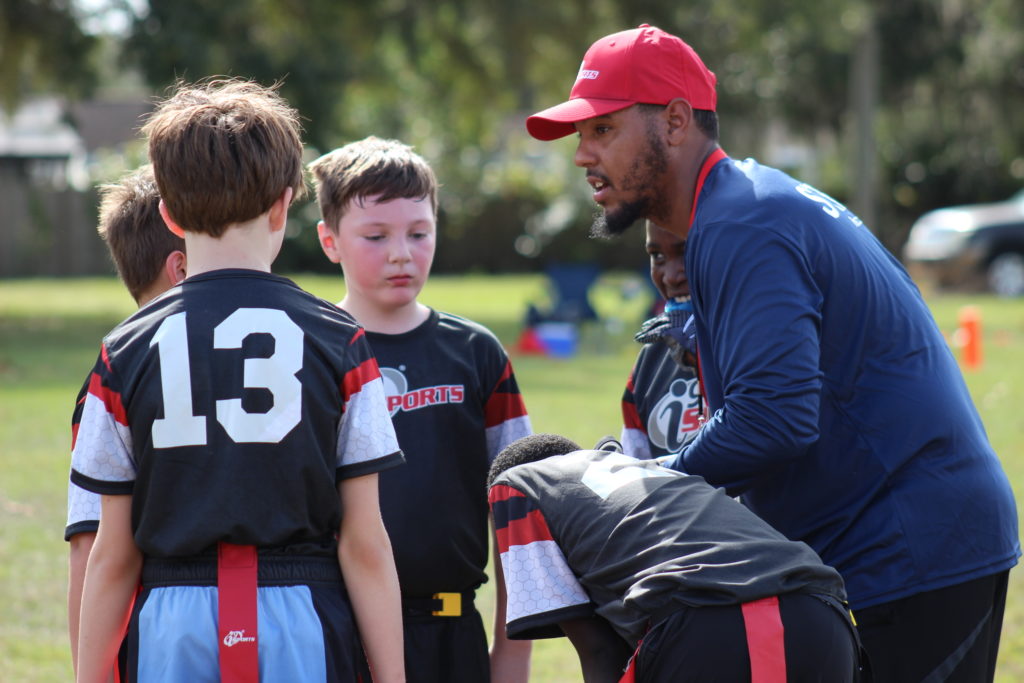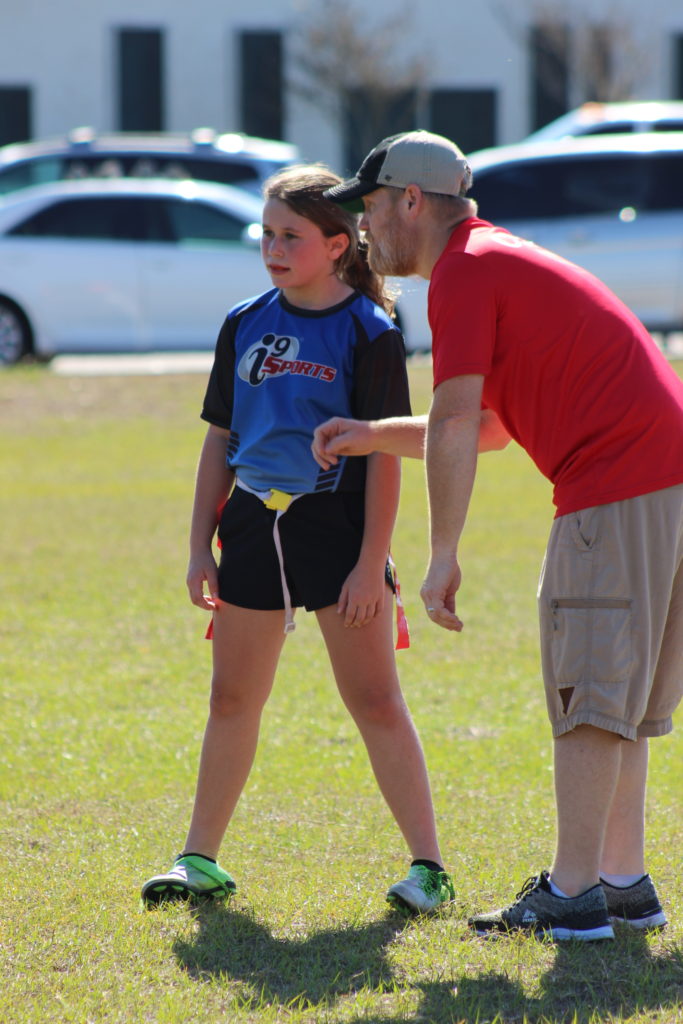Flag Football Basic Rules
More kids are playing flag football these days than ever before. It’s easy to see why—flag football is exciting, inclusive, and incredibly fun. It’s also perfect for families who want their young athletes to play football with a lower risk of injury than the traditional tackle version. If you’re new to the game, brush up on the basic rules of flag football before signing up your child for a local youth sports league.
Who Can Play Flag Football?
Kids of all abilities can learn how to play flag football. No specific build, skill set, or prior experience is required. Both boys and girls from 4 to 17 years old can join a youth flag football league through i9 Sports®®.
How to Play Flag Football
Every game begins with a coin toss to determine who starts with the ball (there are no kickoffs). Games last 30 to 50 minutes, divided into two 15- or 25-minute halves. The clock only stops for timeouts, injuries, and halftime.
When playing in our most common format, 5 v 5, the offensive team begins on its 5-yard line and has four plays to cross the midfield for a first down. If the players fail to advance the ball after three downs, they can either punt (turn the ball over to the opposing team, which starts from its own 5-yard line) or attempt a fourth down. If the offense still fails to cross midfield, the opposing team takes possession of the ball from this spot.
If the offense succeeds in crossing midfield, they have three remaining downs to score a point. Touchdowns are worth six points, and safeties are worth two points.
Flag Football Limits Contact Among Players
While there are several differences between tackle and flag football, the most important one is that there’s no contact allowed. Instead of physically tackling the ball-carrier, players attempt to remove one or both flags that hang from a belt around the ball-carrier’s waist. There’s also no diving, blocking, screening, or fumbles in flag football.
Youth Flag Football Team Sizes
While most youth sports leagues follow the same basic flag football rules, many different versions of the game exist. One important consideration is team size. Youth leagues typically compete with 5-on-5 or 7-on-7, with up to 12 players allowed per team. Team sizes vary by region and age group. To accommodate smaller team sizes, a flag football field is shorter than a tackle football field, measuring 30 yards wide and 70 yards long.
Flag Football Key Words to Know
Understanding the most common flag football terms makes watching the game that much more fun! Here’s what to know:
- The offense is the team who has possession of the ball.
- The defense is the team attempting to prevent the offense from advancing and scoring.
- The line of scrimmage is the imaginary line indicating where the teams can’t cross until the play begins.
- The rush line is the imaginary line seven yards from the line of scrimmage on the defensive side. Any defender positioned behind this line is eligible to rush.
- Snapping is when the center hands or tosses the football between their legs to the quarterback, thus beginning the down.
- A down is the period after the ball is snapped when the offense attempts to advance down the field.
- Line-to-gain is the line the offense must cross to get a first down or touchdown.
- End zones are located on opposite ends of the field. The ball-carrier must cross into their end zone to score a touchdown.
- No run zones are located five yards from the midfield line and before each end zone. If the ball is snapped within this zone, the offense must use a pass play to earn a first down or touchdown.
- A dead ball is not in play. This occurs when a point is scored, the ball touches the ground, the ball-carrier’s flag is pulled or falls off, the ball-carrier steps out-of-bounds, or the ball-carrier’s knee hits the ground.
- Flag guarding is a penalty that occurs when the ball-carrier prevents a defender from pulling their flags.
What are the positions on a Flag Football Team?
Most of the same positions you know from tackle football are found in flag football. Here’s a breakdown of each one:
- The center snaps the ball to the quarterback to begin the down. The center then becomes eligible to go out for a pass and catch the ball.
- The quarterback receives the snap from the center and initiates the play by either handing off or passing the ball. The quarterback cannot run with the ball across the line of scrimmage—unless they hand off the ball and get it back.
- Wide receivers and running backs are eligible to receive a handoff or pass from the quarterback. If they throw the ball to a teammate, they then become passers.
- Rushers are defensive players who begin the play at least seven yards from the line of scrimmage. Once the center snaps the ball, these players rush the quarterback and attempt to thwart a handoff or pass.
- Defensive backs line up to face the wide receivers at the start of the play. They guard against the first run and pass.
- Safeties act as the defensive catch-all, covering deep throws to any player who gets behind them.
- Offensive linemen (optional): 5-on-5 flag football typically doesn’t include offensive linemen, but some larger teams do. Still, “defensive lineman” is not a position in flag football. That’s why 11-player tackle football can be pared down to as little as five players in flag football.
How to Sign Up Your Child for Flag Football
Is your son or daughter interested in playing flag football? If so, i9 Sports® is the youth sports league for you! We provide age-appropriate flag football instruction, fun for kids, and one-day-a-week classes to cater to busy families. With a presence in 1,000 communities across the United States, you’re bound to find an i9 Sports® office near you. Reach out to us today!

